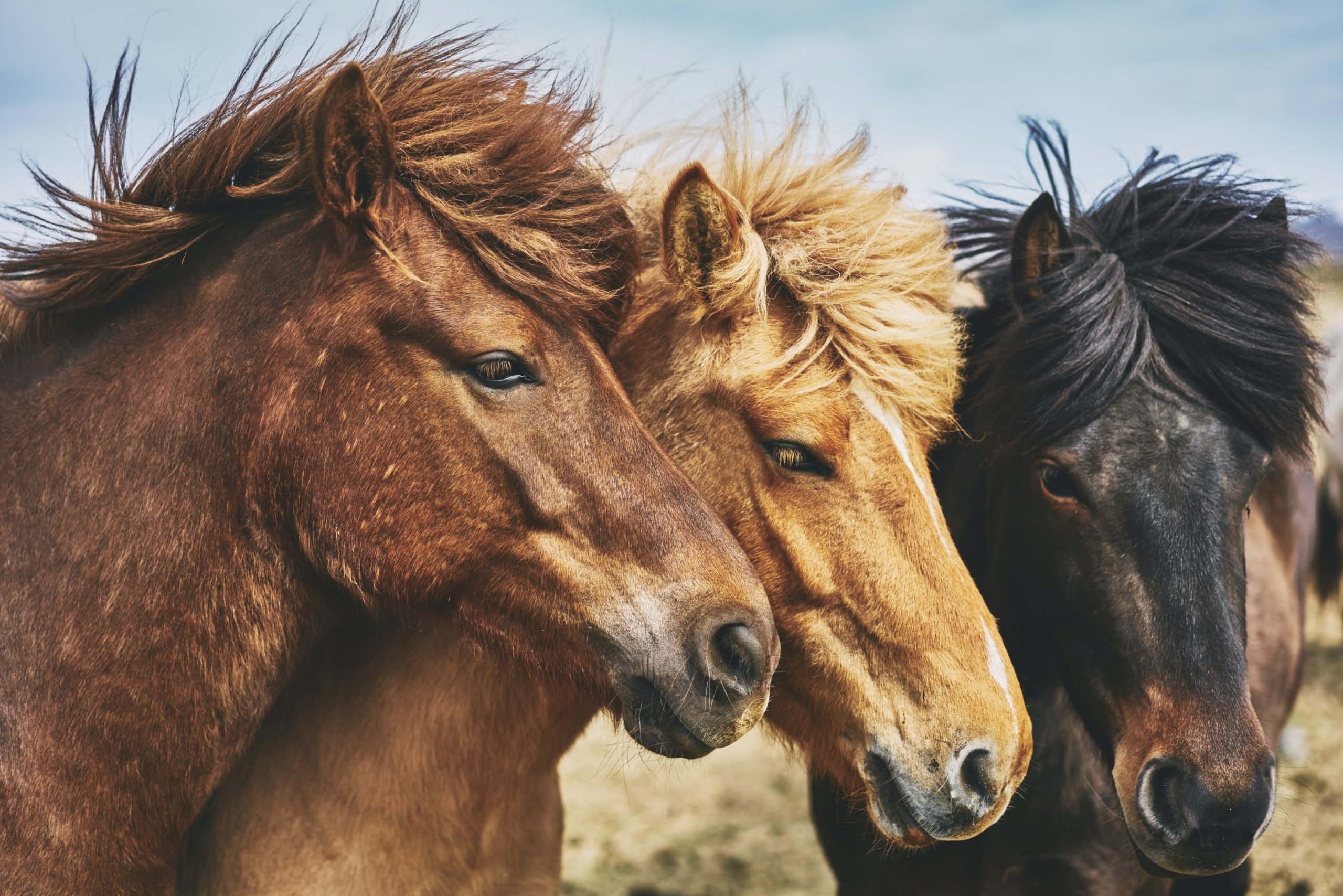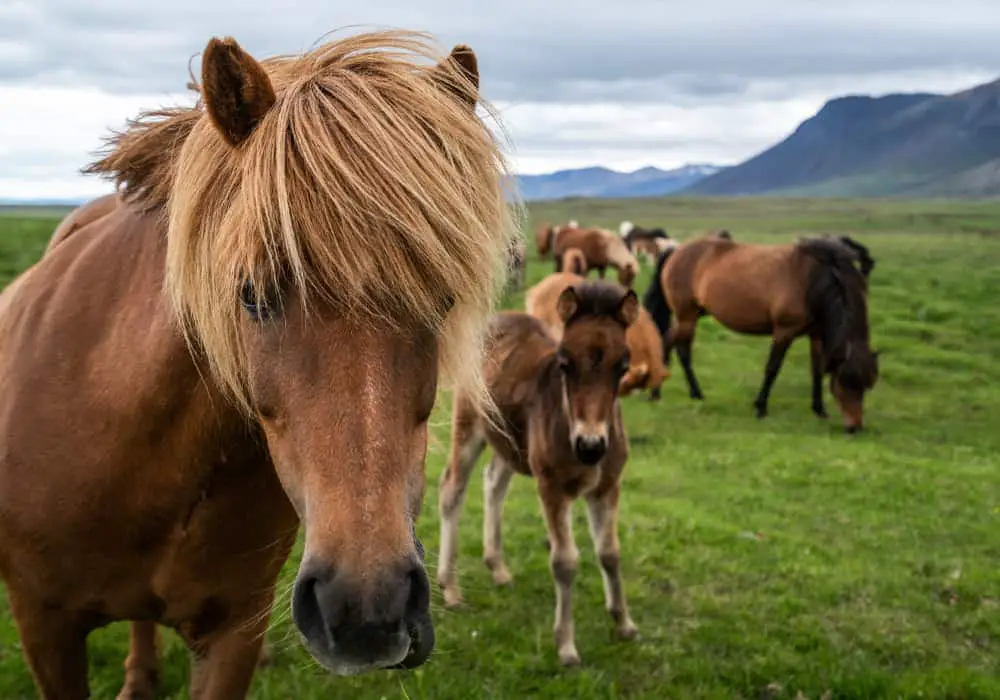Antwort Are Icelandic horses only in Iceland? Weitere Antworten – Are there any Icelandic horses outside of Iceland

The Icelandic is especially popular in western Europe, Scandinavia, and North America. There are about 80,000 Icelandic horses in Iceland (compared to a human population of 317,000), and around 100,000 abroad. Almost 50,000 are in Germany, which has many active riding clubs and breed societies.Their isolation in their home country Iceland allows the breed to stay untouched by cross breeding. Once a horse leaves the country of Iceland, they cannot return. Currently there are less than 6,000 Icelandic horses in the United States.Most other horses have lost these two gaits over time and breeding, and they are “only” capable of the three basic gaits: walk, trot and gallop. Icelandic horses are among the most popular horse breeds in Germany and there are around 65,000 of them living in the country.

How many Icelandic horses are in the world : Icelandic horses can be found all over the world. Over 250,000 Icelandic horses are registered around the world, thereof approximately 40% in Iceland. They have amazing adaptation skills and do well in the ice-cold climates of Greenland and Alaska, but also down under in Australia and New Zealand.
Why can’t you bring horses to Iceland
It is the only horse breed in the country because horses have not been imported to Iceland since the 11th century. Icelandic law prevents horses from being imported into the country and exported animals are not allowed to return. The horse has thus been very isolated and maintained his characteristic.
Can you touch Icelandic horses : You can approach them, but be respectful of other people's property and animals. Like with all horses, go near them slowly and without jerky movements. Offer a hand with closed fingers for them to check you out if they come to the fence.
Aside from spirited temperament, ability to survive in a harsh climate, strength, and small size, the Icelandic horse is known for performing five different gaits. Most horses know how to walk, trot, and canter or gallop. However, Icelandic horses can perform two extra gaits, tölt and flugskeið or “flying pace”.
![]()
The unique gait of the Icelandic horse
However, they possess two unique gaits, the tölt and the skeið, that are thought to have developed in response to a gene mutation. When Icelandic horses perform the tölt, at least one foot is always in contact with the ground.
What horse is native to Germany
The Rheinisch Deutsches Kaltblut, is a breed of heavy draught horse from the Rhineland area of western Germany. It was bred in second part of the nineteenth century, principally at the Prussian state stud at Schloss Wickrath in Wickrathberg, now part of Mönchengladbach in North Rhine-Westphalia.The GOT crew was undeterred by the scale of the horses. Keen viewers of the show will note that the horses used by the Night's Watch tend to shrink as they go north of the Wall, because the actors switched to Icelandic steeds. They were hoping you wouldn't notice, but now we'll never see them the same way again.Icelandic Horses are one of the purest breeds of horses in Europe. They have been bred for over a thousand years to carry people across Iceland's rugged terrain. Today they are still used for sheep herding and leisure riding. Their calm disposition and small size make them perfect companions for new riders.

first Norse Viking settlers
Considered a symbol of fertility, the horse played a pivotal role in Norse culture and history. When the first Norse Viking settlers arrived in Iceland, they brought their Viking horse breeds and belief system with them, and so the Icelandic horse became ingrained in the very fabric of Icelandic culture.
Why can’t Icelandic horses return to Iceland : It is the only horse breed in the country because horses have not been imported to Iceland since the 11th century. Icelandic law prevents horses from being imported into the country and exported animals are not allowed to return. The horse has thus been very isolated and maintained his characteristic.
Why does Iceland not allow dogs : This ban was a response to two things. One was a housing shortage, which made authorities feel like it would be too much to also have dogs in the city. The second was that dogs were not considered hygienic because they could be carries of a deadly tapeworm that could be spread to humans.
Why can’t horses return to Iceland
Yes, it's true; once they leave the country, Icelandic horses are not allowed to return. The ancient Althing parliament passed laws in 982 AD preventing the importation of any other horse breeds to the island. So, for over a thousand years, the Icelandic breed has been kept in complete isolation.

As you probably know, Iceland is an island. That means it's free of many diseases you might find elsewhere. Importing live horses is forbidden mainly to control diseases in horses. But it goes a bit further than that, if you import used saddles or clothing, that must be disinfected.When people think of wild horses, many think of mustangs in the United States or Camargue horses in southern France. But there are also such wild animals in Germany: the Dülmen horses.
Where did horses originate in Europe : Horses were first domesticated in the Pontic-Caspian steppes, northern Caucasus, before conquering the rest of Eurasia within a few centuries.



